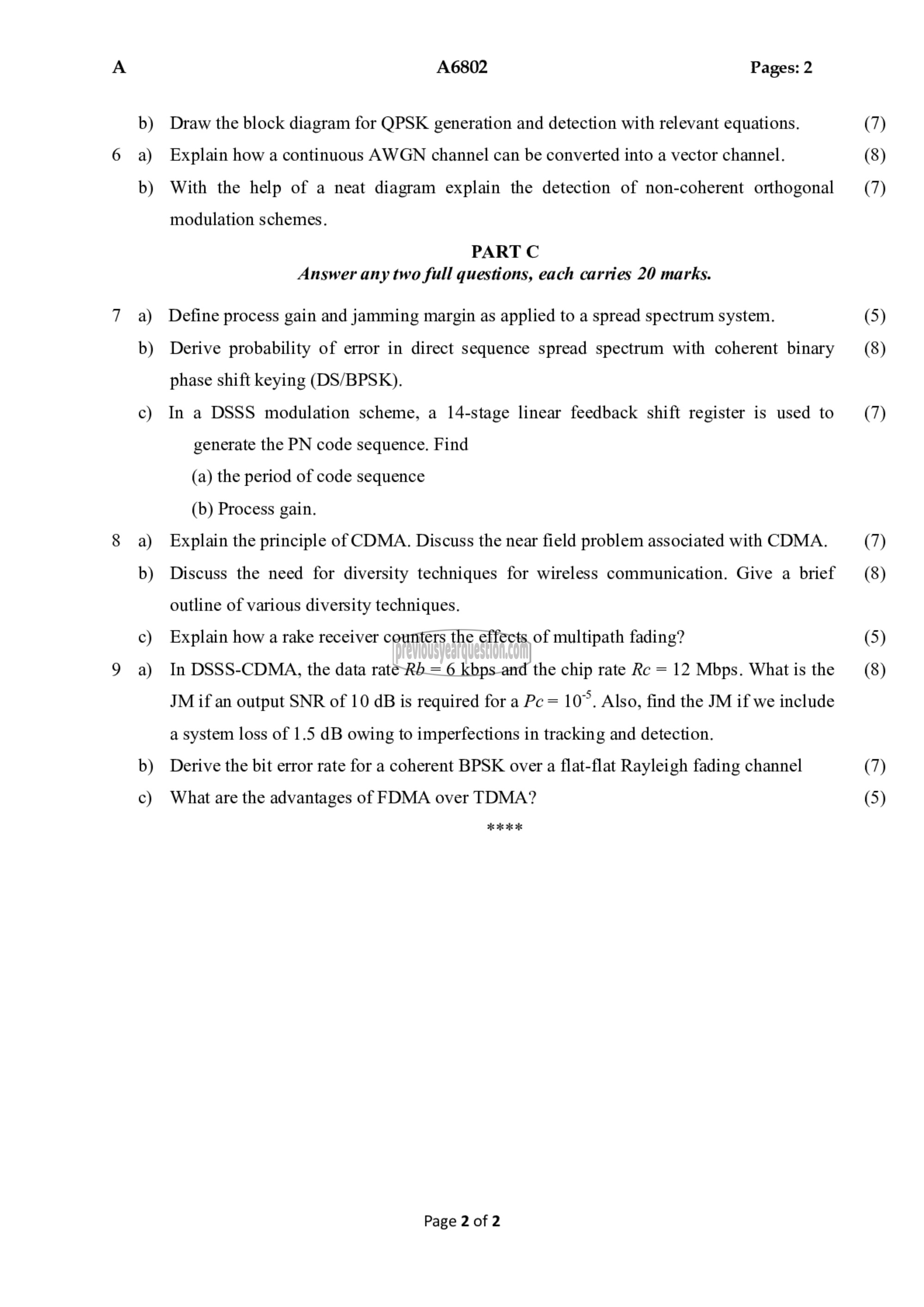APJ ABDUL KALAM TECHNOLOGICAL UNIVERSITY Previous Years Question Paper & Answer
Semester : SEMESTER 6
Subject : Digital Communication
Year : 2018
Term : APRIL
Scheme : 2015 Full Time
Course Code : EC 302
Page:2
b)
a)
b)
a)
b)
९)
2)
0)
௦)
8)
b)
A6802 Pages: 2
Draw the block diagram for QPSK generation and detection with relevant equations.
Explain how a continuous AWGN channel can be converted into a vector channel.
With the help of a neat diagram explain the detection of non-coherent orthogonal
modulation schemes.
PART C
Answer any two full questions, each carries 20 marks.
Define process gain and jamming margin as applied to a spread spectrum system.
Derive probability of error in direct sequence spread spectrum with coherent binary
phase shift keying (DS/BPSK).
In a DSSS modulation scheme, a 14-stage linear feedback shift register is used to
generate the PN code sequence. Find
(a) the period of code sequence
(b) Process gain.
Explain the principle of CDMA. Discuss the near field problem associated with CDMA.
Discuss the need for diversity techniques for wireless communication. Give a brief
outline of various diversity techniques.
Explain how a rake receiver counters the effects of multipath fading?
In DSSS-CDMA, the data rate Rb = 6 kbps and the chip rate Rc = 12 Mbps. What is the
JM if an output SNR of 10 dB is required for a Pc = 10°. Also, find the JM if we include
a system loss of 1.5 dB owing to imperfections in tracking and detection.
Derive the bit error rate for a coherent BPSK over a flat-flat Rayleigh fading channel
What are the advantages of FDMA over TDMA?
اد मैप بد بد
Page 2 of 2
(7)
(8)
(7)
(5)
(8)
(7)
(7)
(8)
(5)
(8)
(7)
(5)
